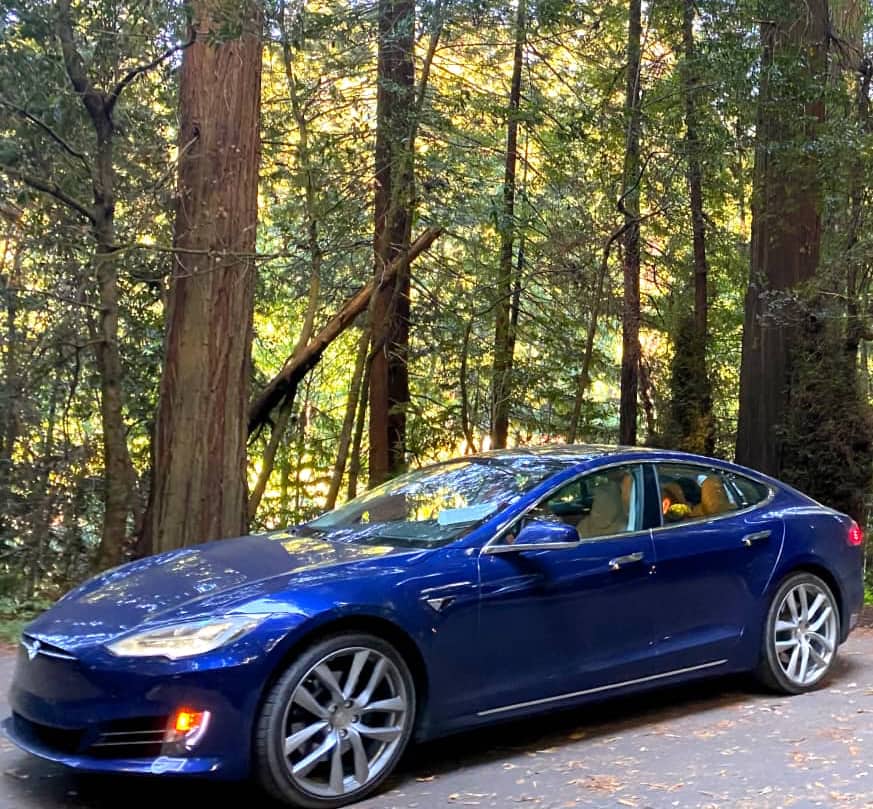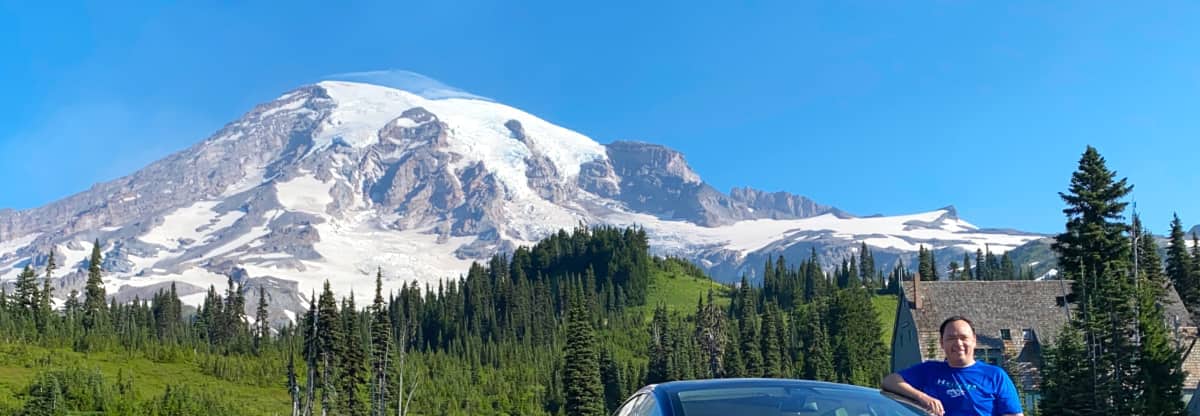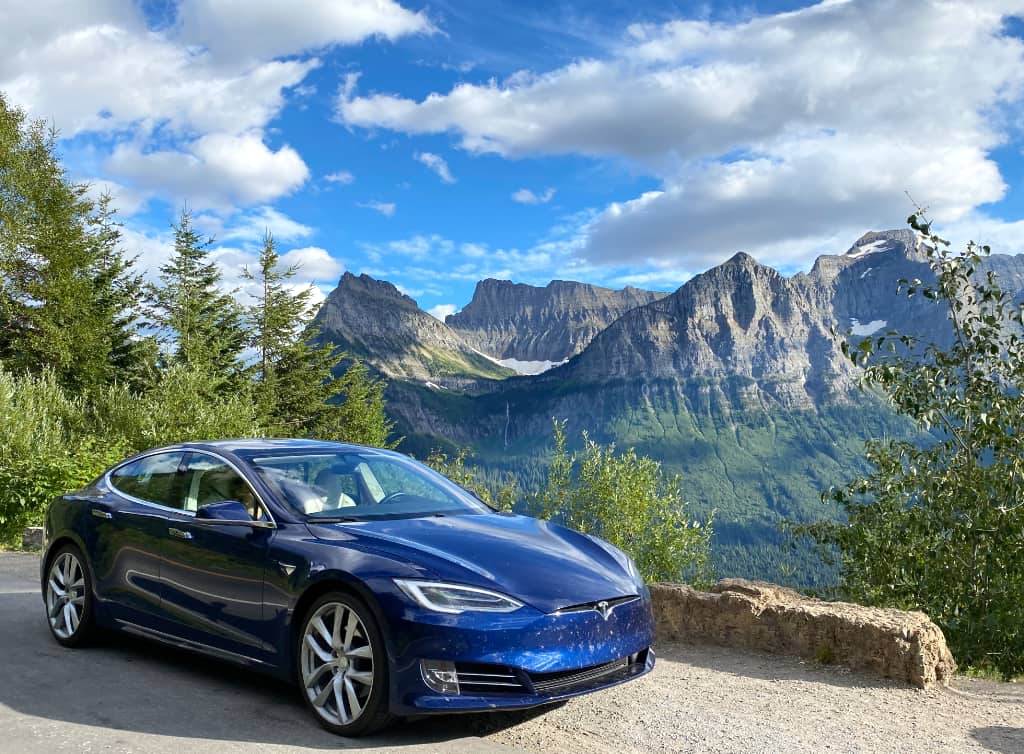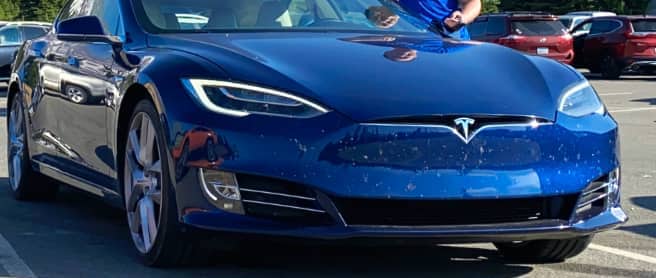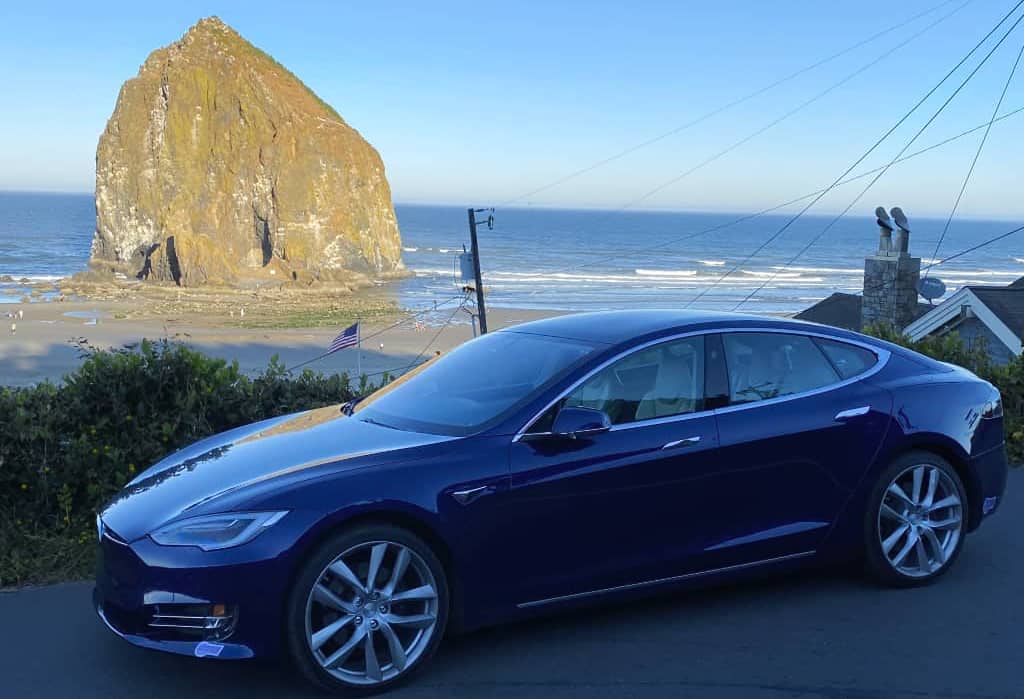Tesla Model S - Pacific Northwest Road Trip
|
5252-mile all-electric road trip
visiting the Pacific Northwest
Our family's two longest road trips before 2020,
2824 miles through "Indian Country" four years ago
and
4647 miles through the "American West" two years ago,
were highly successful at seeking out the beauty of the west, particularly the arid west.
This time around we wanted to skip the deserts of Utah, Colorado, and Arizona and
reach places with more green,
so I planned a third major all-electric road trip to reach wetter parts of the west.
Yet again the leading time constraint was completely due to our little humans, fitting between
the childrens' last day of summer school and Boy Scout Camp in July and
the Thursday before their first day of grade school
so that we all had enough time to rest, recover, wash laundry, and prepare for school.
|
Two required destinations were Glacier National Park and Crater Lake National Park because
The Wife said so.
She was inspired by the July/August 2019 issue of Westways by the American Automobile Association, whose cover article
was about taking a road trip to Glacier National Park and Yellowstone National Park.
"Looks cool!" she handwrote.
We, of course, already checked off Yellowstone in 2018 and had a great time doing so.
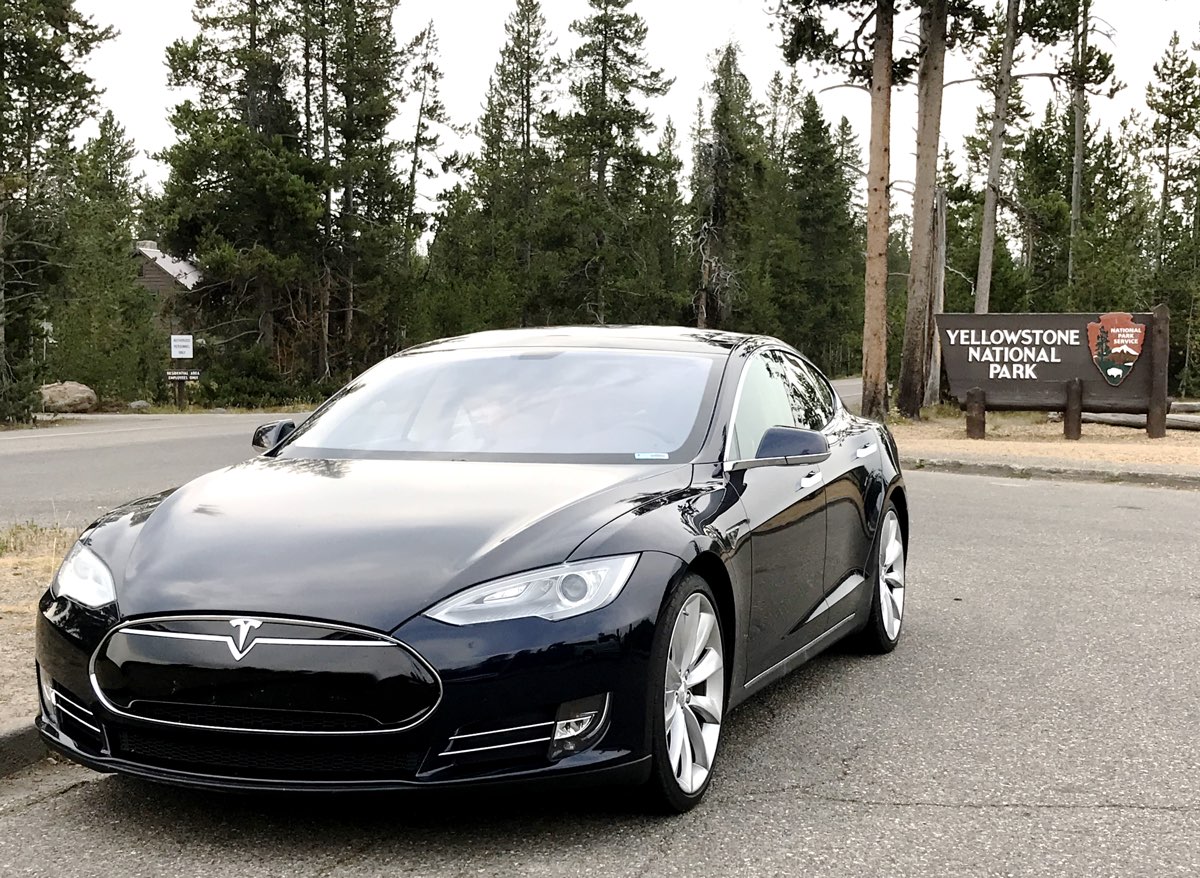
I strongly suggest reading that chronicle before completing this one.
|
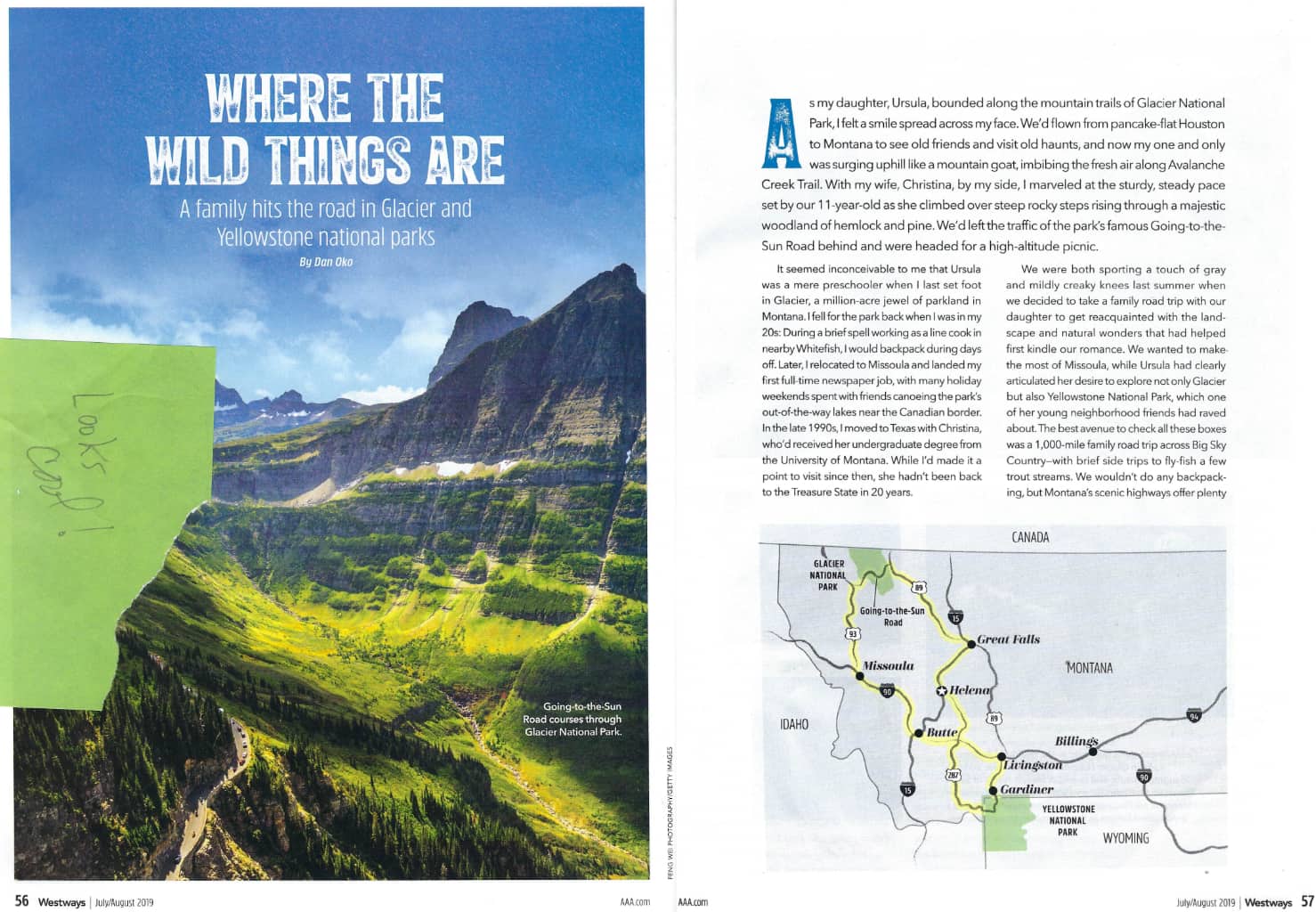
|
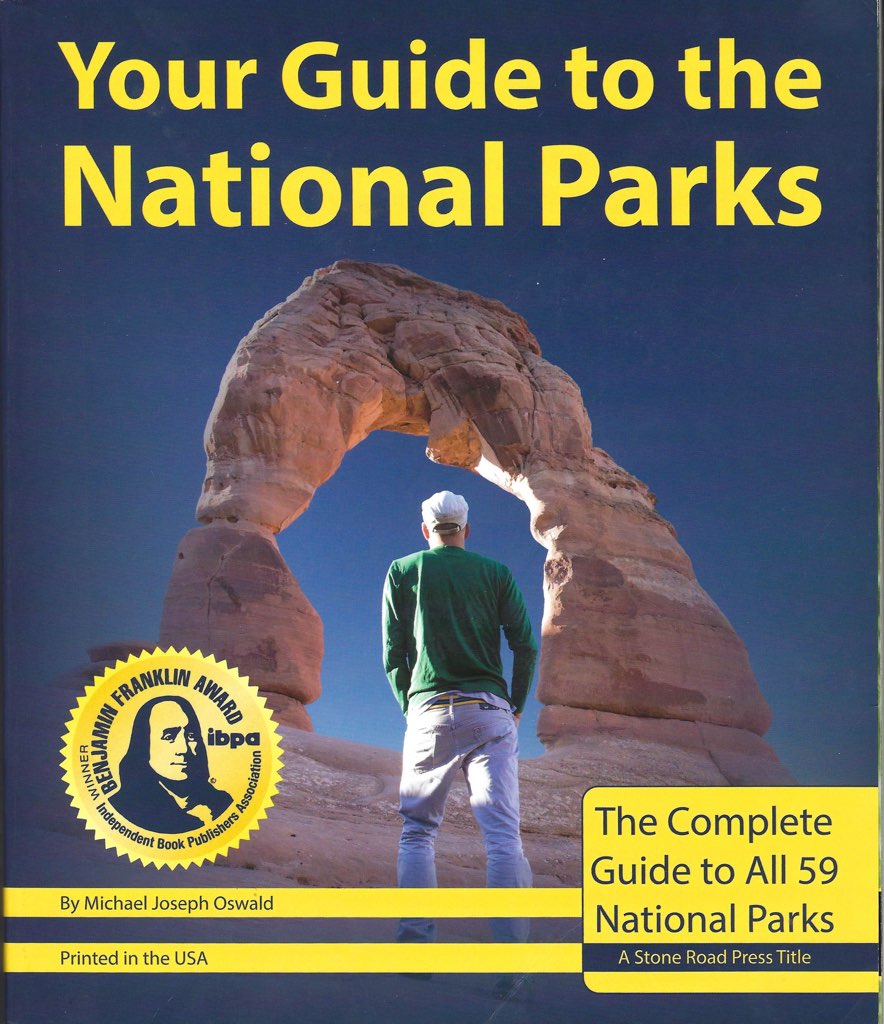
|
To find points of interest which we had not already visited,
I dug further into the "Your Guide to the National Parks" book I used two years ago.
I combined those with points of interest I could find online for every State
in our target area.
Make sure you go back and read my site about my 2824-mile road trip.
There I wrote that, when I was a child, my parents took me, starting from my Southern California home, on
long, cross-country road trips.
When I was 11, we visited various national parks including Yellowstone, Glacier, Olympic, and Crater Lake.
My father had AAA plan out the itinerary in the form of
custom-made spiral-bound notebooks containing hundreds of pages of maps highlighting the exact route
he would drive us from state to state.
I remember flipping the pages of these books to follow our travel on the highways.
Exploring such natural wonders in our country are among the most valued childhood memories,
and I want to do the same for my children.
And this time The Wife was more on-board with the idea of going on these road trips than
ever before. I think that's a hint that the last two long road trips
increased the acceptance of the idea of bringing my children
to ever more amazing places we could see around our country.
|
|
As I did two and four years ago, Google My Maps helped plan my route.
I used it to calculate the travel time between stops and estimate how far we could travel by dinner each day.
| Step 1 |
I gathered onto My Map the points of interest (green pins)
using research from maps and guides I had first, then
online second,
filtered by the time constraints of the trip.
|
| Step 2 |
Then I added charging locations to My Map:
- Tesla Superchargers
(red pins)
using the hundreds listed on
Tesla's Supercharger site
and the crowd-sourced Supercharge.info site.
- Destination Chargers
(black pins)
on the Tesla Destination Network,
listing thousands of hotels that, because they understand the needs of Tesla owners,
provide Tesla-native stalls for overnight charging
just like I do at home.
- If needed, fill in any remaining charging gaps with thousands of chargers listed at PlugShare.
|
| Step 3 |
Connect the dots, that is, work out the fastest route
(known as solving the
Travelling Salesman Problem)
to connect the the points of interest (Step 1) first,
then with the assistance of the available charging locations (Step 2 & 3).
|
| Step 4 |
Optimize the route. I designed my itinerary to have us visit,
preferably in the morning (cooler part of the summer day),
at least one major point of interest for enough time
each day.
|
The result is a map like on the right, and this time
I included a points of interest that we just didn't have time to reach two years ago like
Craters of the Moon National Monument, Glacier National Park, and Olympic National Park.
It is a complete loop trip
with at least one designated point of interest on each day,
starting with a fast drive to Glacier National Park,
where we visit for a few days,
then head west to wiggle east and west through Washington and Oregon to reach other points of interest.
I had to cut several locations in Northern California like Mount Shasta and Mount Lassen so that we would return in time.
Maybe someday we'll visit those in a California-only road trip.
My mileage estimate in the computer actually came out to something over 4000 miles, so
when we began
I was not expecting to beat
the 4647 miles of our 2018 road trip,
not until, during this road trip, I tallied the actual mileage after we returned to California.
| |
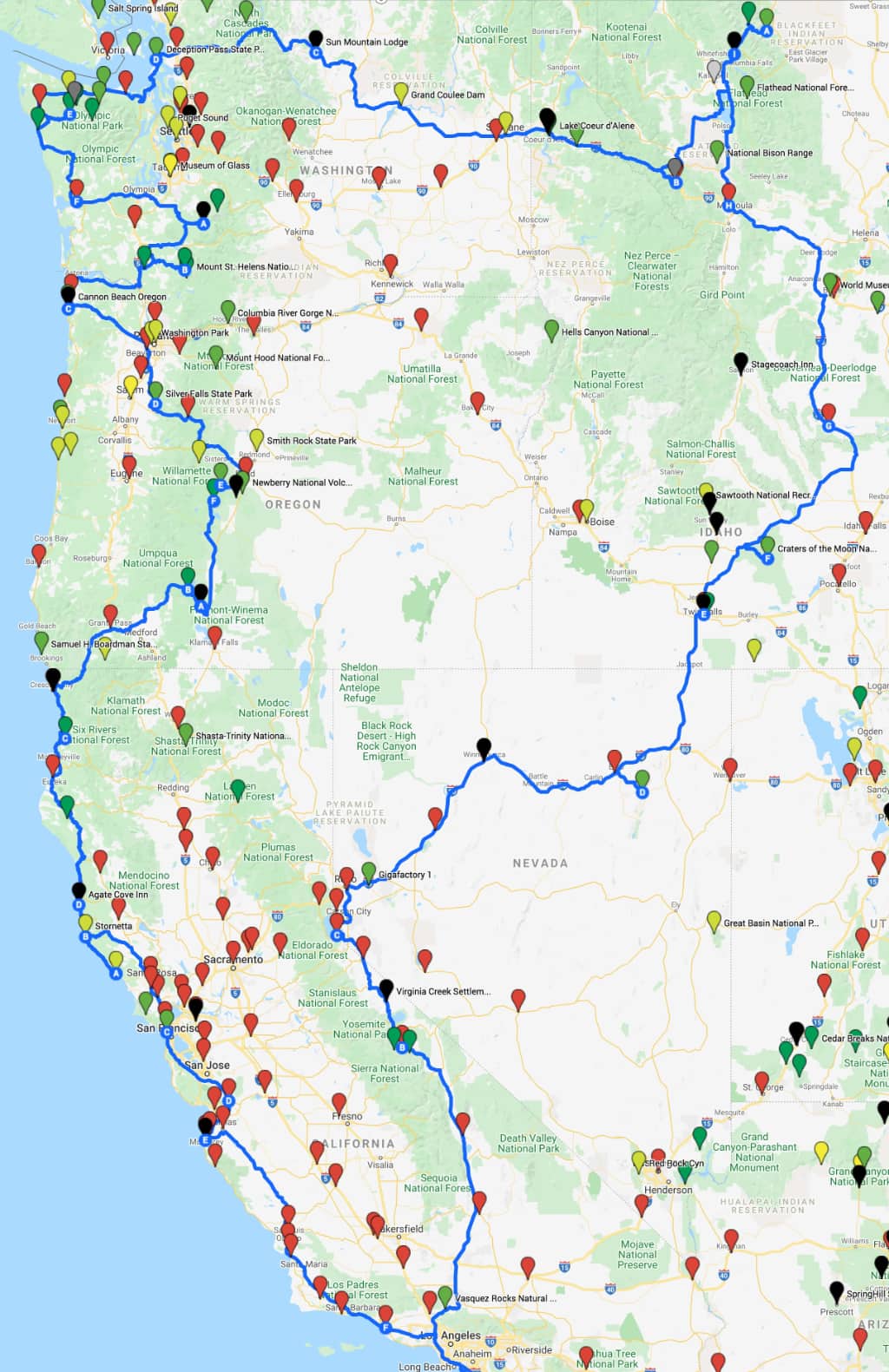
Click to view using Google My Maps
|
|
In July 2020, I ordered an NPS Annual Pass to easily access so many Parks.
Any notion of "spontaneous travel" to these points of interest is utter nonsense
for the simple reason these places attract tourists from all around the world,
therefore decent lodging must be booked several months, if not years, in advance.
For example, nine months prior to our visit, I discovered
no appropriate room was available for us to book within Glacier National Park,
so while closed in winter I booked
Moose Creek RV Resort and Bed & Breakfast
first then, in January and February, began booking reservations from there to build out the rest of the trip.
|
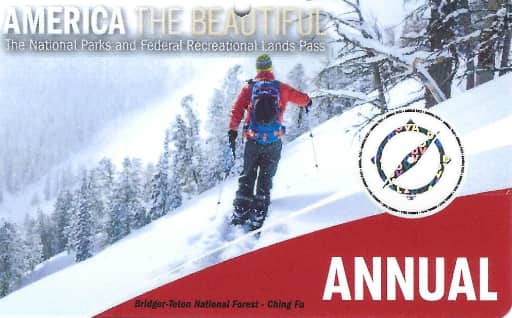
Shipped August 5 and received August 21, after the trip, because:
|
And then the global pandemic hit.
That called into question whether we were doing the trip at all because National Parks were shutting down
in March and April making access by August unknowable. Why drive all that way when the site would be shut down?
So I hesitated on booking more of the trip, particularly anything that was non-refundable, for months.
Then by May park access seemed to reopen, even if Visitor Center buildings would not, so I resumed reserving the trip.
Then portions of our summer schedule began to cancel, including most but not quite all summer camps.
My original plan was an 18-day trip leaving August 3, but notice arrived only in mid June (yikes!) of cancelation
of the Boy Scout summer camp immediately prior to our trip, so that made an August 1 departure possible,
so I replanned the itinerary to use the available time to add a day in Glacier National Park and start earlier, but then I had
revise or replace other reservations already in place for months.
Although I figured the hotel operators would welcome my rescheduling rather than canceling my stays,
it was still much harder to rework the trip at such a late stage.
Juniper in Mammoth for example no longer allowed one-night stays
like I originally booked, so I could not make a new one-night reservation at Juniper on the night I wanted
forcing me to find a different place to lodge.
|
Then Why Go?
Cabin fever.
I watched my children holed up at home from March through July with distance/online learning or whatever euphemism
is used for this schooling at home through a computer screen.
I am adept at using computers for lots of things but it is plain to see using them this way lacks balance.
Yes we're trying to keep people safe from the pandemic but the months of confinement is hard on the children and everyone
and is strange and unnatural. I see my family coming down with cabin fever.
Similarly, my children's methods of using free time changed to use electronically-driven screens for many more hours of the day,
using iPads, a PlayStation 4, a gaming PC, YouTube, and streaming TV services far more than ever.
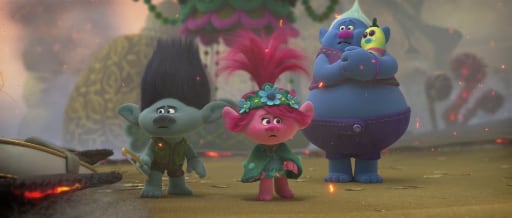
Is this computer-drawn world all there is?
|
We can only watch Trolls World Tour and
Hamilton (as good as it is) streaming so many times before it gets old.
|
My children would not leave our neighborhood for months.
To them the entire world outside home exists only through
computer-driven screens.
Then add to that the prospect that from late August for several more months we may have schooling at home again, or if we
do have children at school the isolation procedure will make this slow and cumbersome and strange, which is better than
schooling at home yes but still strange.
We also foresee that we're going to avoid the airports and any crowded destinations (Hawaii, ski resorts, etc.) this Thanksgiving and Christmas,
so again I don't see us traveling for several months after August.
Meanwhile extensive free-time use of iPads and other electronics will continue.
So knowing what my children are going through and knowing that it will repeat, to mostly the same extent, once school starts,
a road trip away from urban population centers to see Nature and the Great Outdoors is the best and must-do thing for my family.
My long road trips have always been motivated by seeing natural wonders, and we need those now more than ever.
|
|
Parallel to this thought my 9-year-old daughter asked me in July with lament:
"Why are we going on this trip?"
She of course thought it's best to stay in bed watching Trolls World Tour on her iPad over and over.
My best answer was a singing paraphrase from the Disney movie Aladdin:
| |
I will show you the world
Shining, shimmering, splendid...
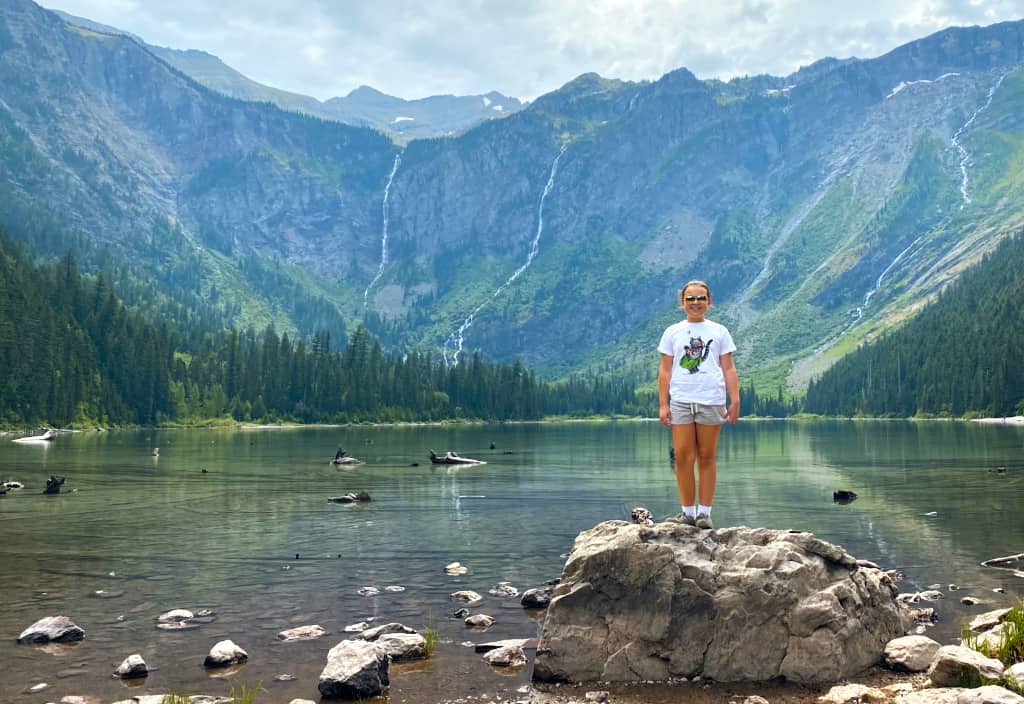
I can open your eyes
Take you wonder by wonder...
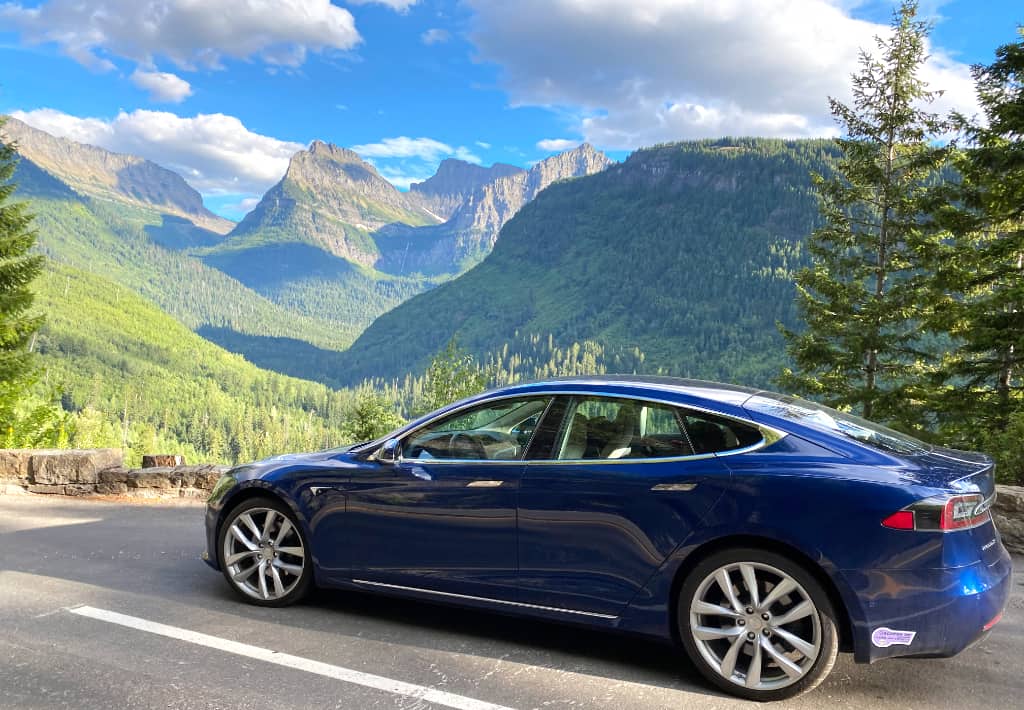
On a magic carpet ride.
A whole new world
A new fantastic point of view...
|
|
|
Why not the East Coast?
I would love to take a road trip to the US East Coast of the US,
like my parents did when I was 10, but to the one asking:
|
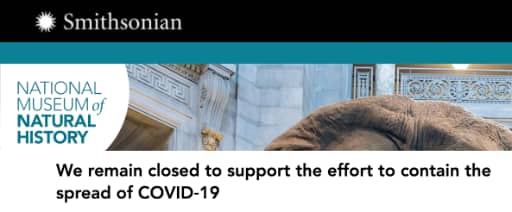
|
|
Didn't you know there's a pandemic on?
|
An East Coast sightseeing trip must necessarily include
Washington DC including the Smithsonian, the White House, the Capitol Building, the Washington Monument, etc., but these are
confined spaces and were generally not open to visitors in mid 2020
at best offering uncertain and unreliable reopening schedules and procedures.
We would also want to go see the Kennedy Space Center, Disney World,
and the Freedom Tower, but these visits are modified and restricted and generally more difficult.
It isn't just me: The 8th-grade field trip at my childrens' school is always Washington DC
and for the first time anyone can remember
it was canceled,
and not only that the 2021 Washington DC trip is canceled too.
By road or otherwise, an East Coast sightseeing trip is just not happening this year nor the next,
and probably not 2022 either. (How can we see all that in only 20 days?)
Too many bucket-list East Coast sights are confined indoor spaces where disease transmits
far faster than they could in sunny outdoor natural environments.
Until a proven-effective vaccine is widely deployed (a question of when not if),
outdoor National Parks and Monuments are generally much safer to visit
than most man-made East Coast attractions, especially those situated in big cities.
Bathroom Anxiety
Because, for some bizarre reason,
too many drivers who do not own an battery-electric vehicle (BEV)
imagine they know
more about how to use BEVs
than drivers who actually own BEVs,
we have
one more thing we need to talk about,
especially for these drivers who do not own an all-electric vehicle who imagine they know more than
an experienced BEV road-tripper:
|
Too many people recklessly spout
the myth that EV drivers universally experience white-knuckled "Range Anxiety".
If that were true, you'd expect it to occur repeatedly in every one of my
2824-mile,
4647-mile, and 5252-mile all-electric road trips.
No that didn't happen on this trip either.
That had no chance because
"Bathroom Anxiety", a phrase I coined
after we entered Idaho during our trip two years ago, always hit first.
Anyone can see here, and in several other instances in
our other trips,
the car had enough range to make it, but the physiological limitations of the humans
demanded a stop first.
And, using real-world data presented here,
we're going to prove this point, and keep proving this point,
until the myth is dead, capisce?
|
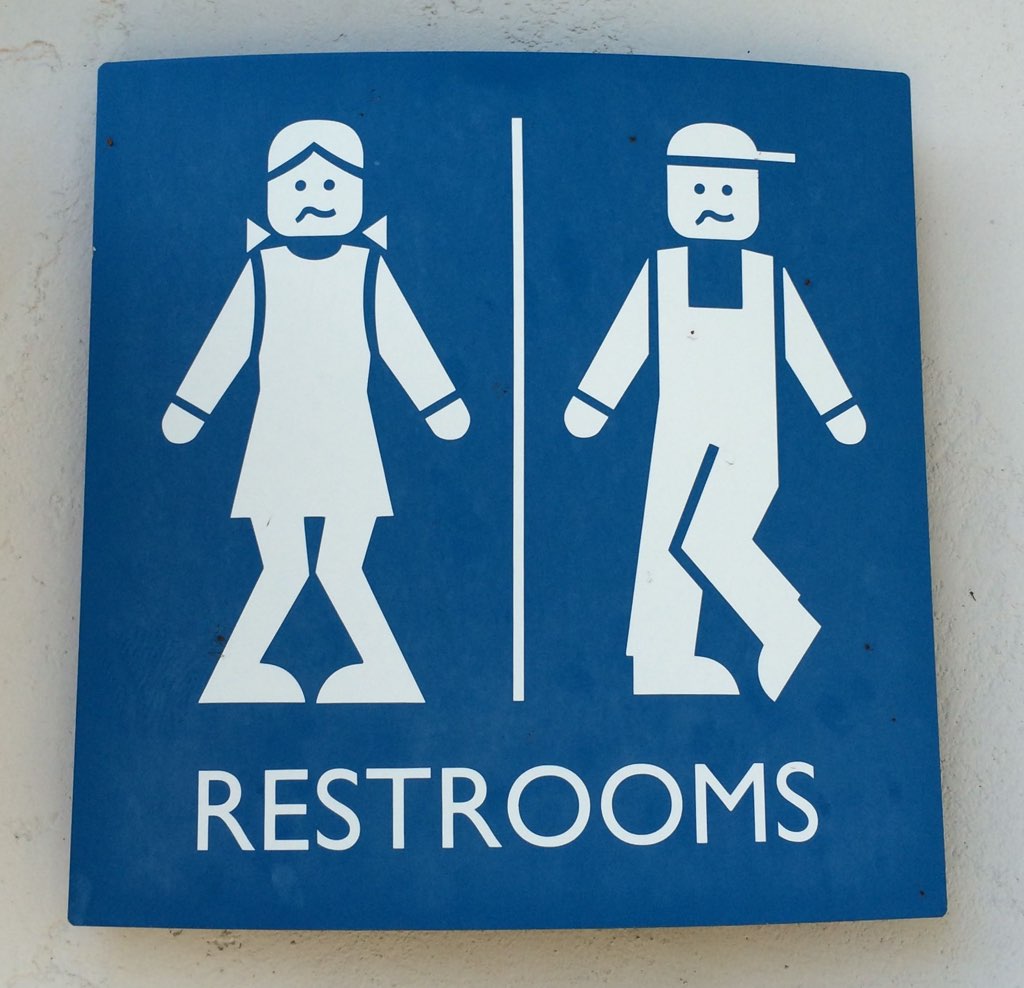
|
Bathroom Anxiety:
worry on the part of a person riding in a car that their bladder or bowels will be unable to hold its
accumulating contents
before the destination or a suitable location to relieve oneself is reached.
|
| |
In the following pages, the symbol on the right signals when Bathroom Anxiety hits.
|
So here's a picture log showing how we did it, how, despite the pandemic, I drove my all-electric Model S on a 5252-mile road trip with my family:
| |
Model S Pacific Northwest Road Trip
|
|
Days Charging at
| |
Destination
|
|
Supercharger
| |
6
|
|
14
|
|
| Cargo Space
|
|
The cargo space in the Model S was more than enough for this 20-day road trip.
We carried four large duffle bags, one for each member of our family, in the trunk.
We made great use of the flexibility of duffle bags:
one large laundry bag would stay in the trunk to hold our dirty laundry,
so every day our duffles would get lighter and smaller.
The process starts over when washing our laundry at the hotel.
|
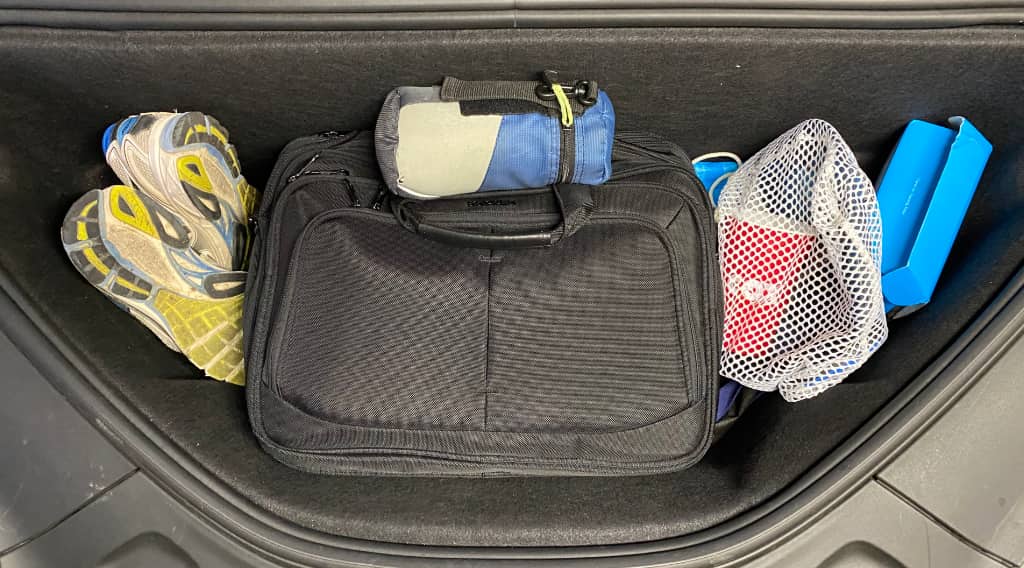
Frunk
|

Trunk
| |
The trunk also held a table and four portable chairs just in case we had to get take-out food
without access to dine-in seating.
We had a bag of a dozen masks just in case we went through them too long between laundering, and
the trunk carried my wife's makeup bag, a bag with medicine and a thermometer gun we ended up not using,
a case of Hint waters, a foldable cooler, and laundry detergent.
The frunk held my laptop bag, running shoes for hiking, my "mess kit" for meals, my video camera, reusable grocery bags,
but
would later evolve to be home for my hiking backpack, tripods, and accumulated maps and Park notices.
| |
The "under trunk" carried 80 small Costco water bottles, which would then create spaces, as we consumed the water,
for small fragile items we purchase along the way including ceramic mugs, candles, and jars of Huckleberry jelly.
The under trunk also carried a complete set of Tesla charging adapters, my wife's laptop bag, a multimeter,
two first-aid kits,
two 75-packs of Clorox disinfecting wipes, and
a six-pack of toilet paper (left side out of view).
We kept the parcel shelf in the back trunk for security of the items underneath, but
we found it came in handy for less-tempting items like my family's
hiking shoes and boots and poles and hats as well as becoming a convenient place to stow the National Park book.
|
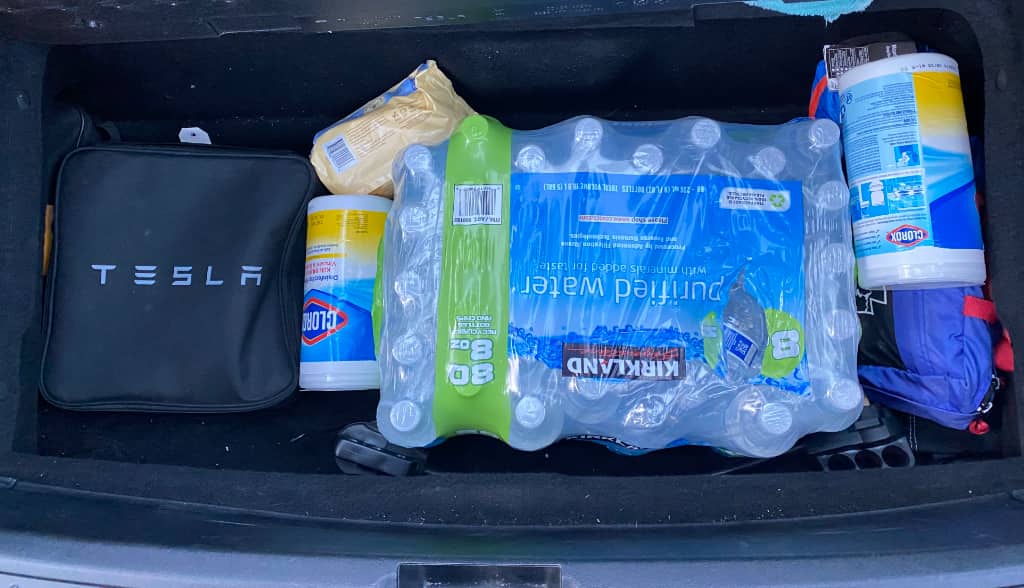
Under Trunk
|

Parcel Shelf
|
I used my iPhone 11 Pro to shoot nearly all these pictures,
supplemented by a Panasonic HC-WXF991,
which has a great lens and 4K video for the wildlife I hope to spot.
|
In many of these places literally nobody else is around,
so I brought an extendable tripod with a clamp for the iPhone
and used my Apple Watch as a remote to trigger the camera.
I'm an old-hand at this from the previous two road trips,
but, with a pandemic going on, do we really want to let other people's fingers touch our phones?
The travel entertainment for the kids were our old iPhone 7 and iPhone 4,
with no active cellular plan, that we let them use for this trip.
Our children are old enough they could shoot pictures on their own, both during the drive
and at points of interest.
And no Interstate Bingo boards this time; after four years those are in tatters by now.
|
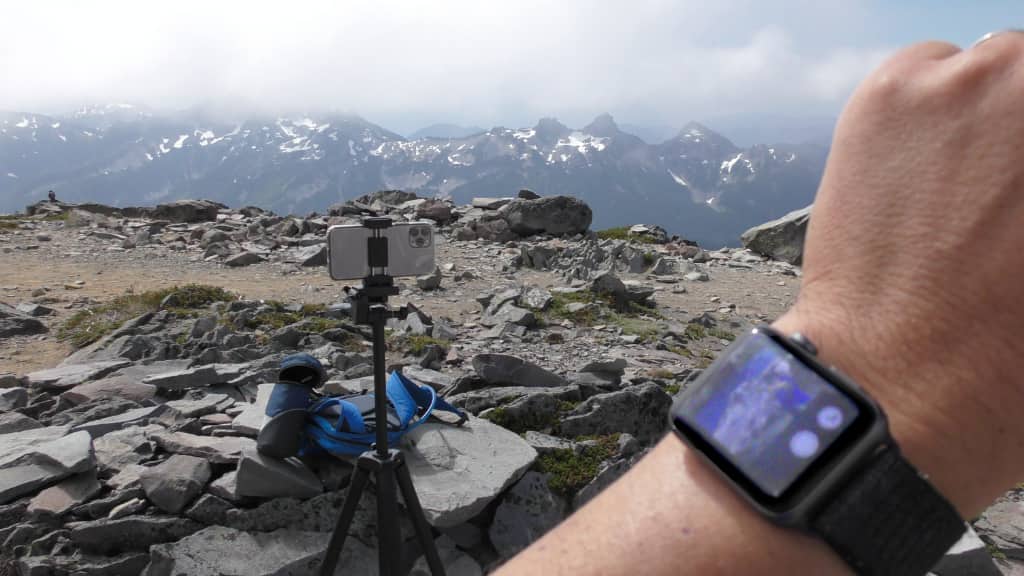
Tripod-mounted watch-triggered iPhone on a tripod taking selfies with Mount Rainier (see image on Watch)
with some of the Cascade Range in view
during a solo hike
|
|
As we traveled, I logged the time, odometer, and range remaining for every event of interest.
Click on the calendar to explore the trip
or read on.
Dean E. Dauger holds a Ph. D. in physics from UCLA, where his group
created the first Mac cluster in 1998. Dr. Dauger is the award-winning
author in multiple American Institute of Physics' Software Contests and
co-authored the original, award-winning Kai's Power Tools
image-processing package for Adobe Photoshop.
After founding his company,
Dauger Research, Inc., its debut product,
Pooch, derived from Dr. Dauger's experience using clusters for his
physics research, was soon awarded as "most innovative" by IEEE Cluster
and continues to revolutionize parallel computing and clusters worldwide
with its patented technology.
|
Back to home
Thanks for having a look!
| 